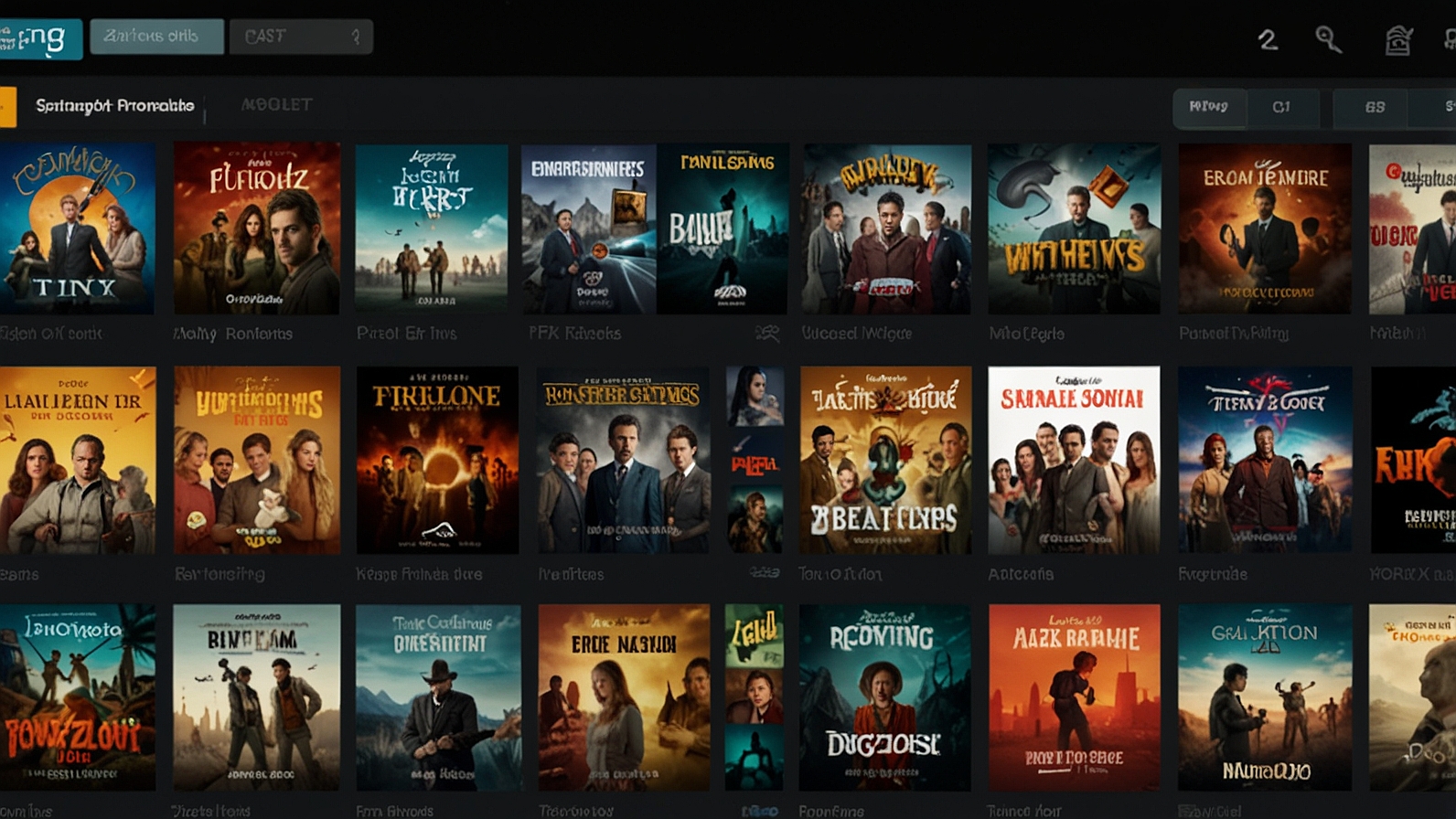Entertainment
Remembering Melanie Olmstead Yellowstone’s Unsung Hero

The captivating landscapes and authentic storytelling of Yellowstone have made it one of the most-watched television series in the past decade. Yet, behind every iconic scene lies the hard work of countless individuals who often remain in the shadows. One such key contributor was Melanie Olmstead—a name that might not immediately ring a bell for fans, but someone whose work was instrumental in the show’s success.
This blog pays tribute to Melanie Olmstead, Yellowstone’s unsung hero, whose dedication and passion played a crucial role behind the scenes. From her early life to her legacy, here’s everything you need to know about Melanie Olmstead and the impact she had on Yellowstone.
Early Life and Background
Melanie Olmstead was born on November 15, 1968, in Salt Lake City, Utah. Raised in a loving adoptive family, she was the daughter of Reid Howard, a former military veteran, and Janet Corbridge, a teacher. From an early age, Melanie had a deep connection with nature and animals, especially horses—a passion that would shape much of her life.
Her love for horses and the outdoors wasn’t just a childhood fascination; it became a defining part of her identity. This connection with the natural world made her an apt fit for the worlds of film and television, particularly projects set against expansive landscapes like Yellowstone.
Career in Film and Television
Melanie began her career in the entertainment industry around the year 2000. While working primarily behind the scenes, she cultivated a reputation as a consummate professional. Her expertise in transportation and location management became the backbone of numerous productions.
Notable Projects
Some of Melanie’s notable projects include working on movies like:
- John Carter – A science-fiction epic where her logistics skills proved invaluable.
- Hereditary – The critically acclaimed horror film directed by Ari Aster.
- Andi Mack – A popular Disney Channel series.
One of her most significant contributions was on Wind River, where she worked alongside Taylor Sheridan—the creator of Yellowstone. This partnership would later bring her into the fold of the Yellowstone production team.
Joining Yellowstone
When Melanie joined Yellowstone, she took on the role of a transportation and location manager. Her vast knowledge of Utah’s landscapes and roads made her indispensable to the team. She ensured that the production navigated the wild terrain seamlessly, capturing the authenticity and beauty that fans adore today.
Contributions to Yellowstone
For a show like Yellowstone—known for its sweeping vistas and rugged authenticity—managing transportation and locations is no small feat. Melanie Olmstead ensured the team had access to the perfect locations to film, staying true to the story’s essence. Her deep understanding of the region’s geography added a layer of authenticity that elevated the show’s storytelling.
Key Contributions
Location Expertise
Melanie’s familiarity with Utah’s hidden gems allowed the crew to shoot in breathtaking locations that perfectly represented the fictional Dutton Ranch.
Seamless Logistics
For a production with such a vast scale, managing transportation between challenging terrains like mountains and valleys required meticulous planning—something Melanie handled with expertise.
Authenticity
Her love for nature and animals reflected in the attention to detail that helped the production accurately portray rural ranch life.
Her impact on Yellowstone wasn’t just technical; her passion inspired the cast and crew and made her contribution more than just a professional duty—it became a personal mission.
Tribute to Melanie Olmstead
Tragically, Melanie Olmstead passed away on May 25, 2019, at age 50. While official causes of her death are speculated to be cancer, her sudden departure left a void in both her professional circles and among her family and friends.
Yellowstone Pays Tribute
The second season finale of Yellowstone featured a touching tribute to Melanie Olmstead, bringing her name to the foreground for fans. The episode ended with a dedication honoring her memory—a moment that not only acknowledged her contributions but also introduced her to millions of viewers.
A Memorial Event
To celebrate her life, Melanie’s family and friends organized a memorial event, which included a horseback ride. This was a fitting tribute to someone with a profound love for horses and the great outdoors. Attendees remembered her as generous, passionate, and dedicated—qualities that defined her career and personal life.
Personal Insights and Legacy
Melanie’s love for animals wasn’t limited to her professional arena; it was a core part of her identity. Colleagues often described her as someone who brought tranquility and positivity to every production she worked on.
She was an advocate for environmental conservation and took pride in working on projects that respected the natural world. For many, Melanie wasn’t just a colleague; she was a friend, a mentor, and an inspiration.
Personal Anecdotes
Members of the Yellowstone team shared stories of Melanie’s kindness—how she went out of her way to ensure actors, crew members, and even horses were comfortable on set. Her dedication to her craft continues to be remembered fondly.
Reflections from the Yellowstone Team
The cast and crew of Yellowstone have spoken about the indelible mark Melanie left on the series. Taylor Sheridan, the show’s creator, described her as “a pillar of strength” whose tireless efforts helped make the production run smoothly. Her colleagues emphasized her warm personality and her ability to make anyone feel valued.
Lasting Impact
Though Melanie’s work often went unnoticed by the public, it laid the groundwork for the success of Yellowstone. By recognizing her contributions, the show reaffirmed the importance of behind-the-scenes heroes like her.
You May Also Like: How to Play the Scimitar Drum Like a Pro
Conclusion
Remembering Melanie Olmstead underscores the importance of recognizing the unseen efforts of individuals who make film and television possible. While actors may take center stage, the success of any production depends on the dedication of countless individuals like Melanie.
If there’s one takeaway from her story, it’s that passion and commitment can leave a legacy that transcends time. Melanie Olmstead will forever be an unsung hero whose name and contributions deserve to be celebrated.
FAQs
Who was Melanie Olmstead on Yellowstone?
Melanie Olmstead was a location and transportation manager whose work was vital to Yellowstone’s production.
How did Melanie Olmstead contribute to Yellowstone?
She managed transportation and scouted filming locations, ensuring the show’s authenticity and logistical ease.
Why did Yellowstone dedicate an episode to Melanie Olmstead?
Melanie passed away in 2019, and the show paid tribute to her immense contributions in its Season 2 finale.
What was Melanie Olmstead’s career in film?
Melanie worked as a transportation and location manager on various projects, including John Carter and Hereditary.
What was Melanie Olmstead’s legacy on Yellowstone?
Her expertise and passion enabled the show to authentically portray its rural and natural landscapes.
Entertainment
TinyZone: Your Free Movie Hub or a Risky Stream?

You’ve finally settled in for a well-deserved movie night. The popcorn is popped, the blankets are cozy, but your go-to streaming service doesn’t have that one obscure foreign film or classic comedy you’re craving. A quick internet search leads you to a site called TinyZone. It’s sleek, it’s loaded with titles, and best of all, it’s completely free. It feels almost too good to be true, right?
If this scenario sounds familiar, you’re not alone. Millions of users stumble upon free streaming platforms like TinyZone every day, drawn in by the promise of unlimited content without a subscription fee. But what exactly is behind this digital curtain? Let’s pull it back together and take a honest, detailed look at what you’re getting into when you click play.
Understanding TinyZone: The Digital Movie Bazaar
Think of TinyZone not as a production studio like Netflix, but as a massive, endlessly stocked digital flea market for movies and TV shows. It doesn’t create its own content; instead, it aggregates it from all corners of the web, providing a single, convenient doorway.
Here’s a quick breakdown of what you’ll typically find:
- Vast Library: From the latest blockbusters to nostalgic classics and hard-to-find indie flicks, the range is staggering.
- User-Friendly Interface: Unlike many sketchy sites plastered with confusing ads, TinyZone has historically been praised for its clean and relatively easy-to-navigate layout.
- Zero Cost: This is the biggest draw. There are no monthly fees, no free trials, and no credit card requirements.
But here’s the crucial question that hangs over this free buffet: How does it work, and more importantly, is it legal?
The Legal Gray Area: A Storm Cloud Over Free Streaming
Let’s be direct here. Streaming from sites like TinyZone operates in a significant legal gray area, and it’s essential to understand why.
Q: If it’s just linking to videos, how can it be illegal?
A: It’s a great question. The core issue isn’t just the act of streaming, but the copyright of the content being streamed. Movies and TV shows are intellectual property. To host or distribute them, a platform needs official licensing agreements—the kind Netflix, Hulu, and Disney+ pay billions for.
TinyZone does not have these licenses. By providing access to this copyrighted material without permission, it likely infringes on copyright laws. While users are rarely targeted in lawsuits compared to the site operators themselves, streaming from an unauthorized source is generally not considered legal in many countries, including the United States.
An Analogy to Simplify It:
Imagine a bookstore where all the books are photocopied versions of bestsellers sold at full price elsewhere. The bookstore (TinyZone) didn’t write the books, but it’s providing illegal copies for free, undermining the authors and publishers who own the work. You, the reader, might just be browsing, but you’re still in a store built on stolen goods.
Practical Tips: Weighing the Risks of Using TinyZone
So, you’re armed with the knowledge of the legal landscape. What about the practical, in-the-moment risks? Let’s be real, the “free” price tag comes with other potential costs.
The Hidden Dangers of Free Streaming
- Malware and Viruses: The primary revenue source for these sites is advertising. These aren’t always the reputable ads you see on YouTube. They can be gateways to malicious software that can infect your device, steal personal data, or hijack your browser with relentless pop-ups.
- Phishing Scams: Some pop-up ads are cleverly designed to look like system alerts, telling you your computer is infected and you need to “download antivirus software now.” Clicking these can lead to serious security breaches.
- Unreliable Quality and Broken Links: That movie might be in perfect HD, or it might be a grainy, cam-ripped version with someone’s head blocking the screen. Links can also die without warning, leaving your movie night in limbo.
- Privacy Concerns: These sites often use extensive trackers. You are the product, and your browsing habits are valuable data.
Before You Click Play: A Safety Checklist
If, after considering everything, you still choose to proceed, please at least arm yourself. This isn’t endorsement; it’s harm reduction.
- Use a Reputable VPN: A Virtual Private Network (like NordVPN or ExpressVPN) encrypts your internet connection, hiding your activity from your Internet Service Provider (ISP) and adding a crucial layer of privacy and security.
- Employ a Robust Ad-Blocker: Browser extensions like uBlock Origin can block many of the malicious pop-ups and ads that make these sites dangerous.
- Keep Your Antivirus Active: Ensure your antivirus software is up-to-date and running in real-time protection mode.
- Never Download Anything: If a prompt tells you to download a “video codec” or “player update” to watch the movie, close the tab immediately. It’s almost certainly malware.
The Future of Streaming and Why Licensed Platforms are the Safer Bet
The landscape of digital entertainment is always shifting. As copyright holders crack down on piracy, free streaming sites often play a game of “whack-a-mole,” disappearing and reappearing under new domain names. This inherent instability is the opposite of the “convenience” they promise.
This is why, whenever possible, shifting your viewing to licensed platforms is the recommended path. Yes, they cost money, but you’re paying for:
- Guaranteed Safety: No risk of malware or phishing.
- Consistent Quality: Reliable, high-definition streams with proper sound.
- Supporting Creators: Your subscription fee directly funds the writers, directors, actors, and crews who make the content you love, ensuring they can keep making more of it.
- Legal Peace of Mind: You can stream without looking over your digital shoulder.
Conclusion & Your Action Plan for Smarter Streaming
Navigating the world of online streaming can be tricky. TinyZone represents a tempting, yet fraught, corner of the internet—a convenient free content-aggregation service that operates in a legal gray area. While its breadth is impressive, the risks to your security and the ethical cost of bypassing creators are very real.
Here are 3 actionable steps to become a smarter streamer:
- Audit Your Options: Before heading to a free site, check the legal, free tiers of services like Tubi, Pluto TV, or Peacock. Your local library also often provides free access to Kanopy and Hoopla, which are packed with fantastic films.
- Prioritize Security: If you ever use an unverified site, never do so without a VPN and an ad-blocker. Think of them as your digital seatbelt.
- Support the Ecosystem: When you find a show or movie you love, consider watching it on a licensed platform. This small act ensures that the artists behind it can continue their work.
The choice, of course, is yours. But now, it’s an informed one.
What’s your go-to method for finding movies legally? Have you found a great hidden gem on a free, ad-supported platform? I’d love to hear your thoughts and experiences in the comments below!
You May Also Like: What is Letflix? The Truth About This Free Streaming Site
FAQs
Is TinyZone safe to use?
Not entirely. While the site itself may not host viruses, the ads and pop-ups on it are often vectors for malware and phishing scams. Using it without strong protection is risky.
Can I get in legal trouble for just streaming from TinyZone?
While major lawsuits typically target site operators, not individual users, streaming copyrighted content without a license is generally illegal. Your ISP could also send you warning letters or throttle your internet speed.
Why does TinyZone have so many ads?
Ads are its only source of revenue. Since it doesn’t charge subscription fees, it relies on aggressive advertising, often from less-than-reputable networks, to pay for server costs and (presumably) profit.
Are there any legal sites like TinyZone?
Yes! Legal free, ad-supported streaming platforms include Tubi, Pluto TV, Crackle, and The Roku Channel. They have licensing deals, so they are both safe and legal.
What’s the difference between TinyZone and Kodi add-ons?
TinyZone is a website. Kodi is media player software that can be customized with add-ons. Some of these add-ons pull content from the same unauthorized sources as TinyZone, so they carry similar legal and security risks.
Does TinyZone work on smart TVs?
It might be accessible through the TV’s web browser, but this is often clunky. It does not have an official app in places like the Google Play Store or Apple App Store due to its questionable legality.
I used TinyZone in the past, should I be worried?
For a one-time use, it’s unlikely anything significant will happen. The concern is more about habitual use without protection, which accumulates risk over time. It’s best to switch to legal alternatives moving forward.
Entertainment
VIPRow WWE.com: Your Free Pro Wrestling Stream

Assume the roar of the crowd, the electric guitar of a superstar’s entrance music, and the thrill of a championship match unfolding in real-time. You’re desperate to watch the latest WWE Premium Live Event, but you don’t have a cable subscription or the budget for a streaming service. This is the exact moment thousands of fans type “viprow wwe.com” into their search bar, hoping for a magic portal to the action.
It’s a modern wrestling fan’s dilemma. The desire to be part of the spectacle is immense, but the path isn’t always clear or affordable. Consequently, sites like VIPRow emerge as tempting solutions. But what exactly are you getting into? Let’s step into the ring and break down everything you need to know about using VIPRow for WWE, from the initial bell to the final pinfall.
What Exactly is VIPRow WWE?
First things first, let’s clear up a common confusion. VIPRow is not an official partner of World Wrestling Entertainment (WWE). You won’t find it linked from WWE.com. Instead, it’s a third-party website that aggregates links to live sports and entertainment streams, including weekly shows like Raw and SmackDown, and massive pay-per-views like WrestleMania and SummerSlam.
Think of it as a digital bazaar. VIPRow itself doesn’t host the video files; it’s a directory that points you to streams hosted elsewhere on the internet. These are typically unauthorized broadcasts, meaning they are streaming content without the permission of WWE or its legitimate broadcast partners.
Here’s a quick comparison to illustrate the key differences:
| Feature | VIPRow | Official WWE Platforms |
| Cost | Free | Subscription or Pay-Per-View Fee |
| Legality | Unauthorized / Pirated | Legal & Licensed |
| Reliability | Unreliable, often lags or breaks | High-quality, reliable streams |
| Safety | High risk of malware & intrusive ads | Secure and safe |
| Content Quality | Variable, often low resolution | Consistent HD/4K quality |
| Convenience | Requires searching for working links | Easy, one-click access |
Why Do Fans Gravitate Towards VIPRow?
Despite the risks, the draw is undeniable. The primary appeal of a site like VIPRow wwe boils down to two key factors:
- Cost: It’s free. For fans in regions where WWE’s content is expensive or for those who can’t justify another monthly subscription, the price tag of $0 is incredibly powerful.
- Accessibility: Sometimes, an event isn’t available on a local network, or a fan might have missed it and wants to catch up. These sites often present themselves as the easiest, most immediate solution.
Navigating the Ring of Risks: The Dark Side of Free Streams
Before you click that play button, it’s crucial to understand the potential consequences. Using unauthorized streaming sites is like walking through a backstage area without a pass—you might get where you want to go, but you’re likely to run into trouble.
- Legal Repercussions: Streaming copyrighted content is illegal in many countries. While individuals are rarely targeted in lawsuits, it’s a risk that exists. The real legal pressure is on the site operators, but users are participating in an illicit activity.
- Security Threats: This is the biggest danger. These sites are funded by aggressive and malicious advertising. You’re one misclick away from:
- Malware and Viruses: Downloads that can harm your computer.
- Phishing Scams: Pop-ups pretending to be from your bank or antivirus software.
- Data Tracking: Scripts that can harvest your browsing data.
- Unreliable Experience: Nothing is more frustrating than your stream freezing during the main event. These streams are notoriously unstable. They can buffer endlessly, drop in quality unexpectedly, or disappear altogether.
- Ethical Considerations: WWE superstars put their bodies on the line for our entertainment. Watching via unofficial means denies them and the company the revenue that supports the entire production, from the performers to the crew.
Read also: The Great Streaming Escape: Are Methatreams the Fan-Fueled Future?
A Safer Playbook: Legal Alternatives to VIPRow for WWE
Thankfully, you don’t have to choose between your wallet and your safety. WWE has made its content more accessible than ever through several legitimate and high-quality platforms.
- WWE Network (on Peacock): In the United States, the entire WWE Network library, including every live Premium Live Event, is available through a Peacock subscription. For a low monthly fee, you get a massive vault of historical content and all the current big shows. It’s a fantastic deal.
- WWE Network (International): For many other countries, the standalone WWE Network app still offers the same incredible library of live and on-demand content.
- YouTube: WWE’s official YouTube channel is a treasure trove of free content. While you won’t get full live episodes, you’ll find highlights, full matches from past events, behind-the-scenes segments, and original shows. It’s a perfect free and legal supplement.
- Hulu / FOX / USA Network: Depending on your location and TV provider, you can often watch the latest episodes of Raw and SmackDown through network apps or services like Hulu, usually a day after they air.
Your 3-Point Plan for Watching WWE Today
Ready to enjoy WWE without the anxiety? Here’s your game plan:
- Audit Your Existing Subscriptions: Check if you already have access to Peacock (in the U.S.) or another service that carries WWE content. You might be paying for it already!
- Embrace the Free & Legal Options: Follow WWE on YouTube and social media. The amount of high-quality, free content they provide is substantial and can satisfy your wrestling fix between major events.
- Invest in the Best Experience: If you’re a dedicated fan, a Peacock or WWE Network subscription is the best value. It supports the industry you love and delivers a seamless, high-definition experience right when the action happens.
The Final Bell
The temptation of a quick, free fix like VIPRow wwe.com is understandable. But in the long run, the constant buffering, security scares, and ethical unease can sour the experience of what should be pure entertainment. The world of WWE is built on epic stories and incredible athleticism; it deserves a viewing platform that is just as reliable.
By choosing a legal route, you’re not just getting a better stream; you’re casting a vote of support for the superstars in the ring. You ensure that the spectacle you love can continue for years to come.
What’s your favorite WWE memory that made you a fan? Share it with us, and let us know which legal platform you use to never miss a moment!
FAQs
1. Is VIPRow legal to use for watching WWE?
No. VIPRow streams copyrighted content without permission from WWE or its broadcast partners, making its use illegal in most jurisdictions.
2. Can I get a virus from using VIPRow?
Yes, the risk is very high. These sites are riddled with malicious ads (malvertising) that can infect your device with malware or spyware, even without you downloading anything directly.
3. Why does the stream on VIPRow keep buffering or stopping?
The streams are unofficial and often overloaded with viewers. The servers hosting them are not designed for high-quality, reliable broadcasting to a massive audience, leading to constant interruptions.
4. Are there any free and legal ways to watch WWE?
Absolutely! WWE’s official YouTube channel offers extensive highlights, full classic matches, and original shows. Some network apps also offer free previews or delayed viewing of weekly shows.
5. What is the best legal alternative to VIPRow?
In the U.S., Peacock is the ultimate destination for WWE content. Internationally, the WWE Network app provides a similar, all-in-one service for a monthly fee.
6. Will WWE or my internet service provider (ISP) know if I use VIPRow?
While ISPs can see the sites you visit, they typically don’t monitor for individual streaming piracy. However, the risk, though small for end-users, is not zero.
7. Does using an ad-blocker make VIPRow safe?
An ad-blocker can reduce some risks by blocking malicious pop-ups, but it doesn’t make the site legal or the stream reliable. The fundamental issues of legality and unstable streams remain.
You may also like: Streameast.is: The Ultimate Guide to the Free Sports Streaming Hub
Entertainment
Garforfans: Creator Monetization and Fan Engagement

Imagine a world where your most passionate fans don’t just like your posts—they actively fund your next project. A world where the connection between creator and community is so direct that it cuts out the algorithmic noise. This isn’t a distant dream for a select few; it’s the new reality being built on growth-stage platforms like Garforfans.
For too long, creators have been trapped in a system where their value is measured in fleeting likes and unpredictable ad revenue. The hustle is constant, the burnout is real, and the connection with the very people who make it all possible often feels distant. Garforfans is shifting this paradigm, positioning itself not as just another social platform, but as a dedicated ecosystem for creator monetization and exclusive fan experiences. It’s where fandom evolves from passive consumption into active participation.
The Creator’s Dilemma: Why the Old Model is Broken
Many creators start their journey on mainstream social platforms. They build an audience, only to find that the platform owns the relationship. Algorithm changes can wipe out their reach overnight, and monetization options are often limited to broad, non-exclusive ads. Consequently, the creator becomes a content mill, constantly chasing virality instead of nurturing a dedicated community.
This model is fundamentally unstable. It prioritizes platform growth over creator sustainability. Fans might be numerous, but they aren’t invested in a way that provides predictable, recurring income. This is the gap Garforfans was designed to fill.
Building Your Economic Engine: The Garforfans Monetization Blueprint
The core of Garforfans is its multi-pronged approach to monetization. Instead of relying on a single income stream, creators can build a robust financial foundation through several integrated channels.
1. Tiered Subscription Models: The Heart of Predictable Income
The power of subscriptions lies in their predictability. You can plan your next album, podcast season, or art series with financial confidence. Garforfans enables creators to set up multiple membership tiers, each offering a different level of access and exclusivity.
- Bronze Tier (The Insider): For a small monthly fee, fans get early access to public content, a special badge, and voting rights on minor decisions.
- Silver Tier (The Inner Circle): This tier includes everything in Bronze, plus access to monthly Q&A sessions, behind-the-scenes content, and a members-only Discord channel.
- Gold Tier (The Patron): The premium experience. Fans at this level receive all previous benefits, plus exclusive digital downloads, signed physical merchandise, and direct input on future creative projects.
This structure allows fans to support at a level they’re comfortable with, while providing you with a layered and stable revenue stream.
2. Pay-Per-View Content and Digital Downloads
Beyond subscriptions, Garforfans empowers you to monetize individual pieces of content. This is perfect for special one-off events or deep-dive resources.
- Live Workshops & Concerts: Host a specialized tutorial or an intimate acoustic session that fans can purchase a ticket to watch live and access later on-demand.
- Exclusive Digital Assets: Sell high-resolution photo packs, custom-designed digital stickers, presets, or eBooks directly through your page.
3. Direct Fan Funding for Projects
Have a big idea that requires upfront capital? Garforfans integrates crowdfunding functionality directly into your community hub. Launch a campaign for your new documentary, art book, or podcast equipment. Because your most loyal fans are already gathered on the platform, they are your most likely and passionate backers.
Crafting Unforgettable Fan Experiences: Beyond the Content
Monetization is only one side of the coin. The other, equally important side is the experience. Garforfans thrives by facilitating a sense of belonging and exclusivity that fans can’t find anywhere else.
Fostering a True Community
The platform’s tools are designed for interaction, not just broadcasting. Dedicated feed spaces, live chat during streams, and community forums allow for genuine, multi-directional conversations. Fans connect with you, but they also connect with each other, building a powerful network rooted in a shared passion for your work.
The Power of Direct Access
Fans don’t just want to watch; they want to participate. Garforfans makes this possible through features like:
- Live Q&A Sessions: Host regular, tier-exclusive video calls where fans can ask questions and get to know the person behind the art.
- Collaborative Decision-Making: Let your Gold-tier patrons vote on the next song you cover, the name of a character in your webcomic, or the topic of your next deep-dive video.
- Direct Messaging (for top tiers): Offer a direct line of communication for your most dedicated supporters, making them feel truly seen and heard.
Garforfans vs. The Rest: A Clear-Cut Advantage
How does Garforfans truly differentiate itself in a crowded market? The focus is on integration and creator-centricity.
| Feature | Traditional Social Platforms | Garforfans |
|---|---|---|
| Primary Goal | Maximize user engagement for ad revenue. | Maximize creator revenue and fan connection. |
| Monetization | Unpredictable ad revenue, brand deals. | Integrated tiered subscriptions, digital sales, and crowdfunding. |
| Algorithm | Opaque, controls reach. | Transparent, puts your content directly in front of your subscribers. |
| Community Tools | Limited comments and DMs. | Robust feeds, exclusive forums, and live interaction features. |
| Data & Ownership | You have limited access to fan data. | You own your relationship with your fans and have access to valuable data. |
This comparison highlights the fundamental shift: Garforfans is a tool for you, not a stage where you are the product.
Getting Started on Garforfans: A Practical Guide
Transitioning to a community-supported model requires strategy, not just a profile setup. Here’s a practical path to launch your Garforfans presence successfully.
1. Map Your Content Tiers
Before you launch, decide what exclusive content and experiences you can consistently offer. Be realistic about your capacity. Overpromising and underdelivering is the quickest way to lose trust. Sketch out a content calendar for each tier for the first three months.
2. Promote with a Soft Launch
Don’t just drop a link. Tease your Garforfans community on your other social channels for a few weeks. Talk about the exclusive things you’re planning—the things your biggest fans have been asking for. Create a sense of anticipation and exclusivity.
3. Engage Relentlessly at the Start
The first weeks are critical. Be hyper-present in your community spaces. Respond to comments, ask questions, and host impromptu live sessions. This initial energy sets the tone and shows your fans that this space is alive and that you are truly accessible here.
4. Analyze and Adapt
Use the platform’s analytics to see what’s resonating. Which tier is most popular? What type of exclusive content gets the most engagement? Use these insights to refine your offerings and double down on what your community values most.
Conclusion: Reclaim the Creative Relationship
The digital landscape for creators is at a turning point. The era of being at the mercy of algorithms and ad rates is giving way to a new model built on direct, valued relationships. Garforfans provides the architecture for this new reality—a place where your creativity is not just displayed, but sustainably supported. It’s where you can stop shouting into the void and start building a home for your most important asset: your fans.
You May Also Like: Ditto for us NYT Crossword: The Answer Explained
FAQs
What kind of creators is Garforfans best for?
Garforfans is incredibly versatile. It’s ideal for any creator with a dedicated following, including musicians, podcasters, visual artists, writers, YouTubers, educators, and even niche experts like chefs or fitness instructors. If you have knowledge or artistry that people value, you can build a community here.
How does Garforfans handle payments and payouts?
The platform typically handles all payment processing securely. Creators usually receive their earnings on a monthly cycle, after the platform deducts a pre-disclosed percentage as a service fee. Payouts are made via direct bank transfer or popular online payment gateways.
I’m worried about moving my fans from a free platform to a paid one. How do I manage this?
The key is to frame it as an enhancement, not a replacement. Your main social channels can remain free for general content. Position your Garforfans as the exclusive, behind-the-velvet-rope experience for super-fans who want more—more access, more depth, and a direct role in supporting your work.
What type of exclusive content should I offer?
Think about what your fans consistently ask for. This could be: early video releases, full-length versions of podcasts, high-res digital art files, song demos, detailed tutorial breakdowns, personal life updates, or raw, unedited vlogs. The content should feel special and unavailable anywhere else.
Can I use Garforfans if I have a smaller, but very engaged, audience?
Absolutely. In fact, a smaller, highly engaged audience is the perfect starting point for Garforfans. These are your true fans who are most likely to see the value in supporting you directly. Converting 100 passionate fans into paying community members is often more sustainable and profitable than managing 10,000 passive followers.
How do I promote my Garforfans without annoying my broader audience?
Use a “soft-sell” approach. Instead of constantly spamming a link, talk about the cool things happening inside your community. For example, share a screenshot from an exclusive Q&A (blurring details) and say, “Had an amazing conversation with my inner circle on Garforfans today! We decided the next project will be…” This creates curiosity and FOMO (Fear Of Missing Out).
Is there a risk of burnout from having to constantly engage with a paid community?
This is a valid concern. The solution is to set clear boundaries and manage expectations from the start. Communicate your schedule (e.g., “I host one live Q&A per month” or “I check the forum on Tuesdays and Thursdays”). Your fans will appreciate the consistency, and it will prevent you from feeling the need to be online 24/7.
-

 Home Improvement10 months ago
Home Improvement10 months agoEasy Ways to Clean and Maintain Your Foam Play Mat
-

 Tech11 months ago
Tech11 months agoExplore iZoneMedia360 .Com Features & Benefits
-

 Celebrity11 months ago
Celebrity11 months agoWho Is Andrew Santino Wife? The Full Story
-

 Uncategorized11 months ago
Uncategorized11 months agoPrairie Dog Guide: Habitat, Behavior, and Conservation
-

 Celebrity11 months ago
Celebrity11 months agoA Deep Dive into Jeremy Allen White Movies and TV Shows
-

 Business11 months ago
Business11 months agoHow Influencersginewuld Shapes the Future of Branding
-

 Apps & Games11 months ago
Apps & Games11 months agoThe Pizza Edition Games: A Perfect Slice of Fun and Flavor
-

 News11 months ago
News11 months agoHowling Mine vs. Time-Tearing Morganite: A Strategic Card Comparison





